Elizabeth’s Kitchen Diary became the first food blog in the world to add a My Emissions carbon emission label to recipe cards.
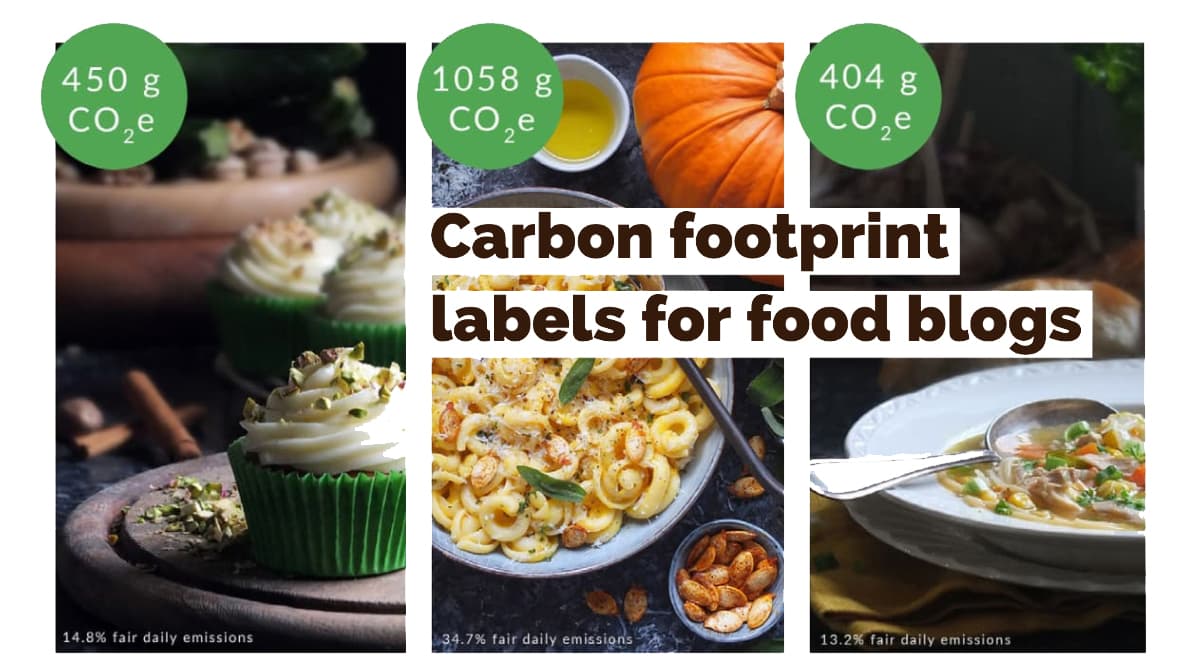
Table of Contents[Hide][Show]
- Carbon emission labelling for recipes – the world’s first
- Introduce yourself! Who are you guys, and what do you do?
- What are carbon emissions?
- What prompted you to start this project? Where did the idea come from?
- What are environmental labels for recipes?
- Why do you think carbon labelling is needed?
- What is the daily fair emissions percentage?
- How have you figured out the carbon emissions for each ingredient? Talk us through the background science.
- How do you see carbon emission labelling evolving in the future?
- Do you have any tips for reducing the environmental impact of our diet?
- Anything else you’d like to add?
- Get carbon emission labels for your recipes
- Spread the word! Pin this post!
Carbon emission labelling for recipes – the world’s first
In 2020, we teamed up with My Emissions, listed in the 2024 Forbes 30 under 30 Social Impact Category, to bring you, at a glance, the carbon emissions per serving of each of our recipes.
Why?
The carbon emission labelling movement has gained momentum over the last few years. Brands such as Quorn and Oatly already display their carbon footprint on their packaging, and several other multinational companies are considering doing the same.
We at Elizabeth’s Kitchen Diary believe that carbon labelling will soon become standard, like the traffic light labelling for the food we’re familiar with now. This labelling will help us make informed choices about our diets and give us insights into how these choices directly impact the environment.
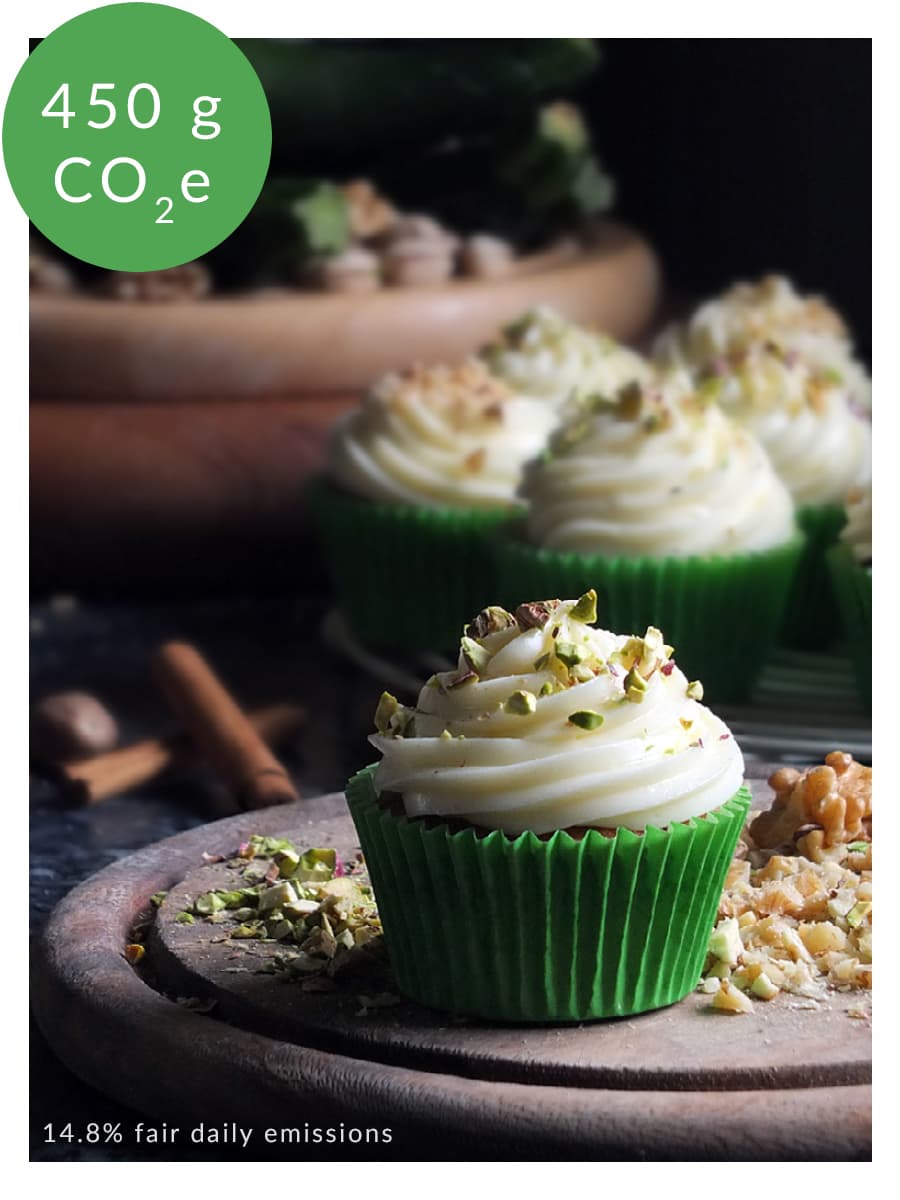
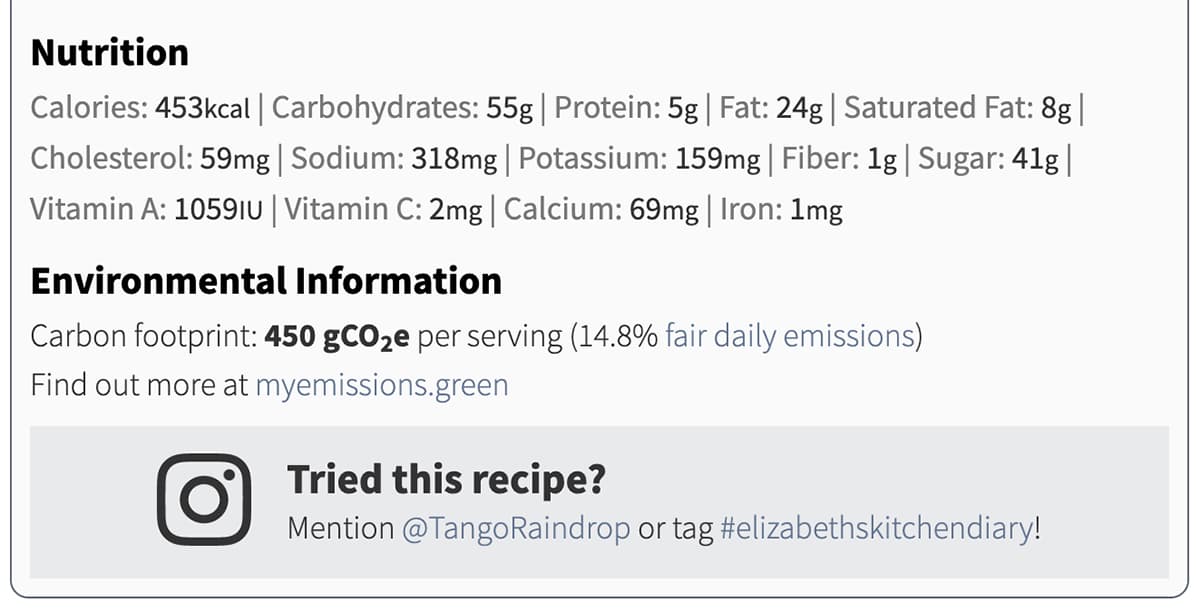
I like how the carbon emission label from My Emissions fits seamlessly into my recipe card under the nutritional information. You can see, at a glance, the impact that making my recipes will have on the environment. It’ll also encourage me to create lower-carbon recipes.
My Emissions have also developed a daily fair emissions value. There’s no sense in having a carbon footprint number if we don’t know what it means. What’s a high number or a low number? They’ve determined that in 2020, 3 kg of emissions per person per day is considered fair. You can find out more about this in the text below.
I could wax lyrical about the merits of these labels, where they came from, and why we should push food producers and recipe writers to adopt them, but I thought this information should come straight from Matt and Nathan, the My Emissions developers.
So, I asked them a few questions…

Introduce yourself! Who are you guys, and what do you do?
Hi! We’re Matt and Nathan, the co-founders of My Emissions. We met in our first year of University and have been friends for about 5 years now.
We’ve had a variety of jobs between us, including engineering and tech start-ups, which has prepared us well for our new venture. Broadly, Nathan develops our website and tech, whilst Matt works on our data, sales, and marketing – as with any start-up, though, we end up working on lots of things together!
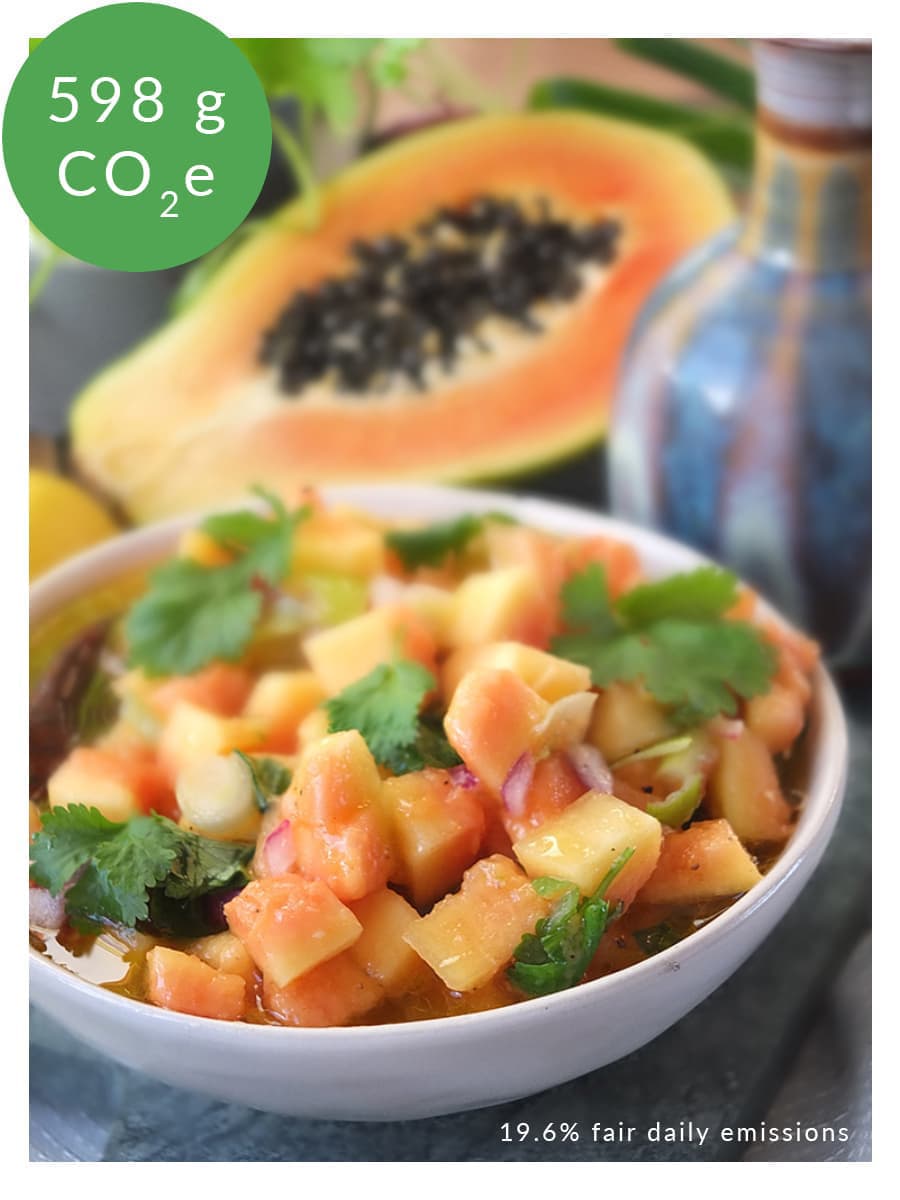
What are carbon emissions?
There are many different types of greenhouse gas emissions, which occur naturally in the world. Human consumption, however, has led to increasing levels of greenhouse gases in our atmosphere—accelerated by, for example, burning lots of fossil fuels and deforestation.
These gasses stop heat from escaping the world’s atmosphere, so rising levels are heating up the planet – it’s like the ‘greenhouse effect’, hence their name.
Carbon dioxide is the main greenhouse gas, but there are many others, including methane and nitrous oxide. To properly assess a product’s ‘global warming potential’ (GWP), all gasses produced are converted into carbon dioxide equivalents (CO2e), allowing us to easily create a single value for each recipe’s climate impact.
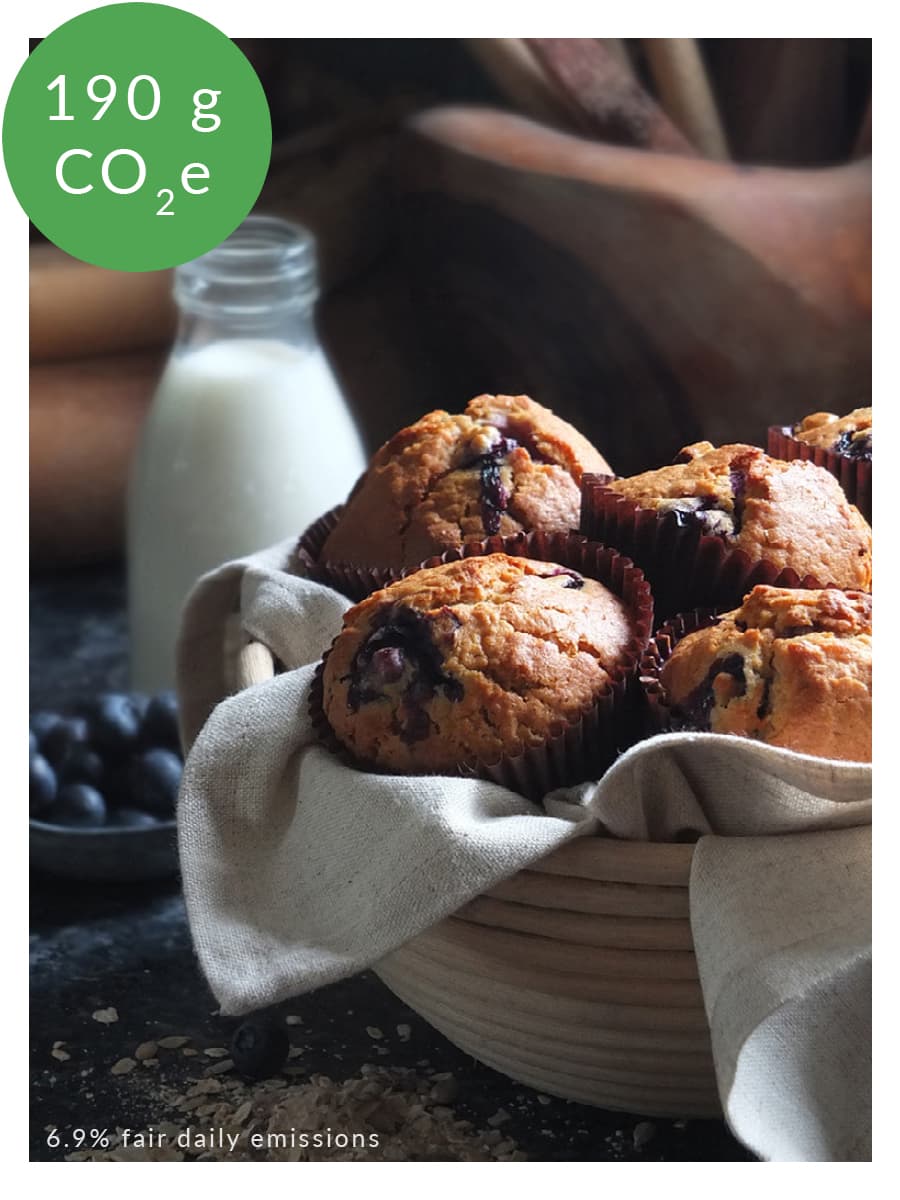
What prompted you to start this project? Where did the idea come from?
It very much started as a ‘lockdown project’, and it’s gone from there really.
In March 2020, we were both left with lots of time and no other work: Matt had been furloughed, whilst Nathan had quit his previous job intending to go travelling, which had to be cancelled.
We both want to live more sustainably but were frustrated at the lack of clear environmental data. We’d always talked about working on a project together, and after a few visits to the “Virtual Pub,” we decided to research what we could do.
After a bit of time, we identified the lack of carbon labels for food, and that’s when we properly got to work.
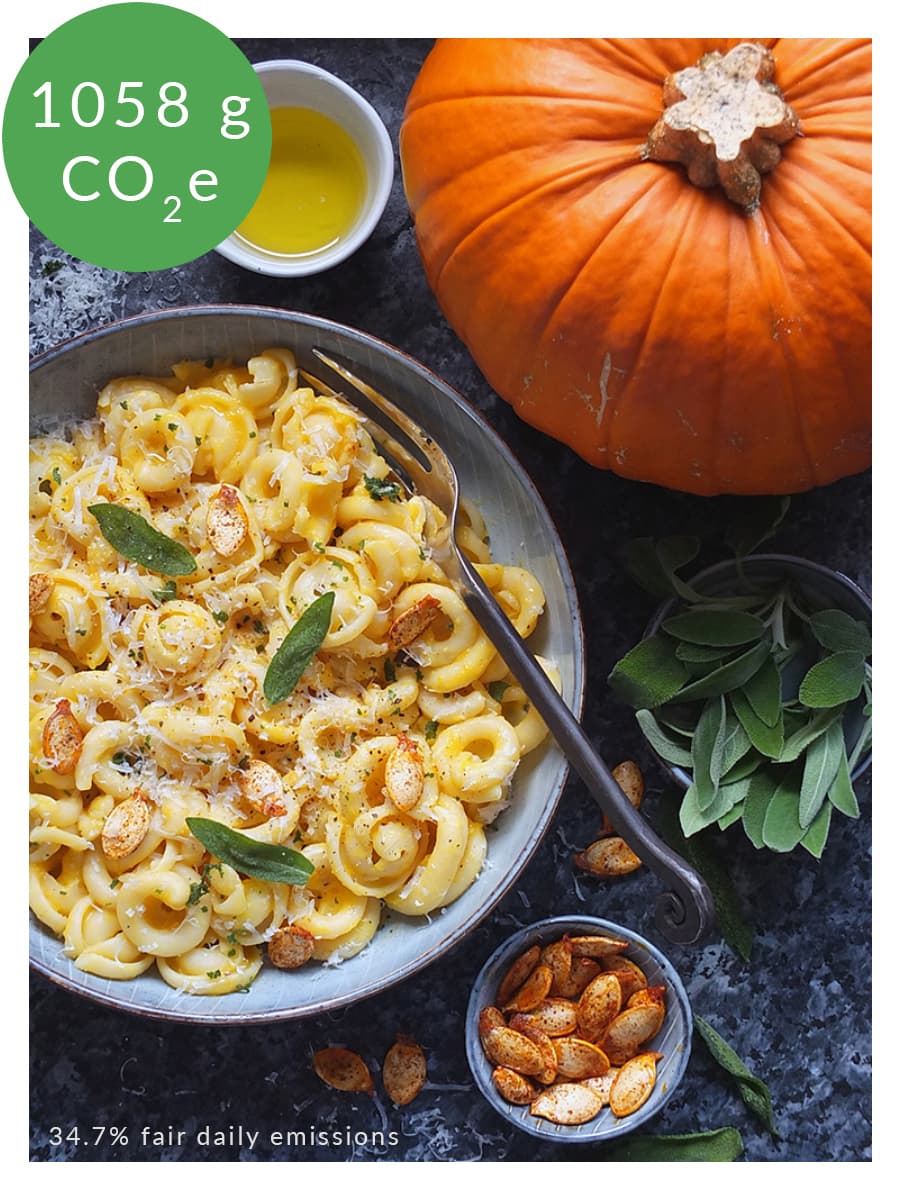
What are environmental labels for recipes?
There are many different types of ‘environmental labels’, including an ‘accreditation’ based on meeting certain criteria or an aggregating ‘score’ based on different factors. Our food environmental labels are closer to nutritional information, displaying the recipe’s quantified carbon footprint.
Why do you think carbon labelling is needed?
Without clear environmental information, it’s hard for people to know what food is better or worse for the environment. Environmental labels will, therefore, be incredibly important in helping to educate and empower people to make more sustainable choices, just as nutritional information has been for health.
A less talked-about benefit is that they will force people to consider the climate when choosing their food. Right now, it’s very difficult to ‘see’ the emissions from food—it’s not like a car, where you can often see and smell exhaust emissions.
Displaying clear values next to each recipe helps people to ‘see’ the embodied emissions in the food, as well as pointing to the more sustainable options so they can reduce their own carbon footprint.
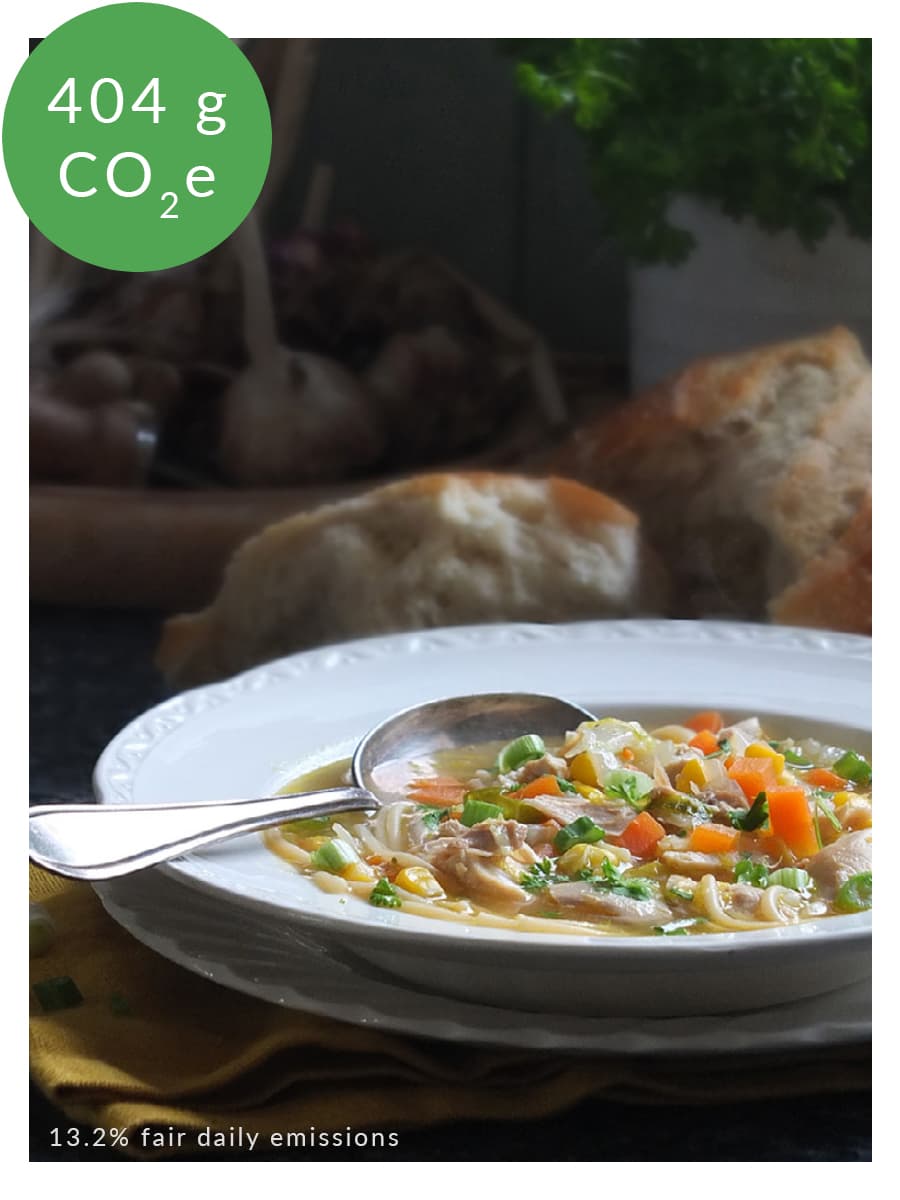
What is the daily fair emissions percentage?
We wanted to give context to our carbon footprint results. We realised that telling someone their food contributed, say, 1kg CO2e, didn’t really mean a lot. Taking inspiration from nutritional information, we calculated a ‘fair daily amount’, which contextualises whether a recipe’s emissions are high or low.
The value we have calculated is about 3 kg CO2e/person/day, based on the estimated global greenhouse gas emissions from food in 2018.
We decided to use a global figure rather than a figure for each region, as we don’t think it’s right to ask low-polluting countries to reduce their footprint even further – we believe people with higher carbon footprints bear a greater responsibility to reduce their emissions.
Finally, the value also takes into account the UN’s projection that global emissions must fall by 7.6% each year in order to limit global warming to less than 1.5°C.
Find out more: Understanding the Fair Daily Food Emissions Value
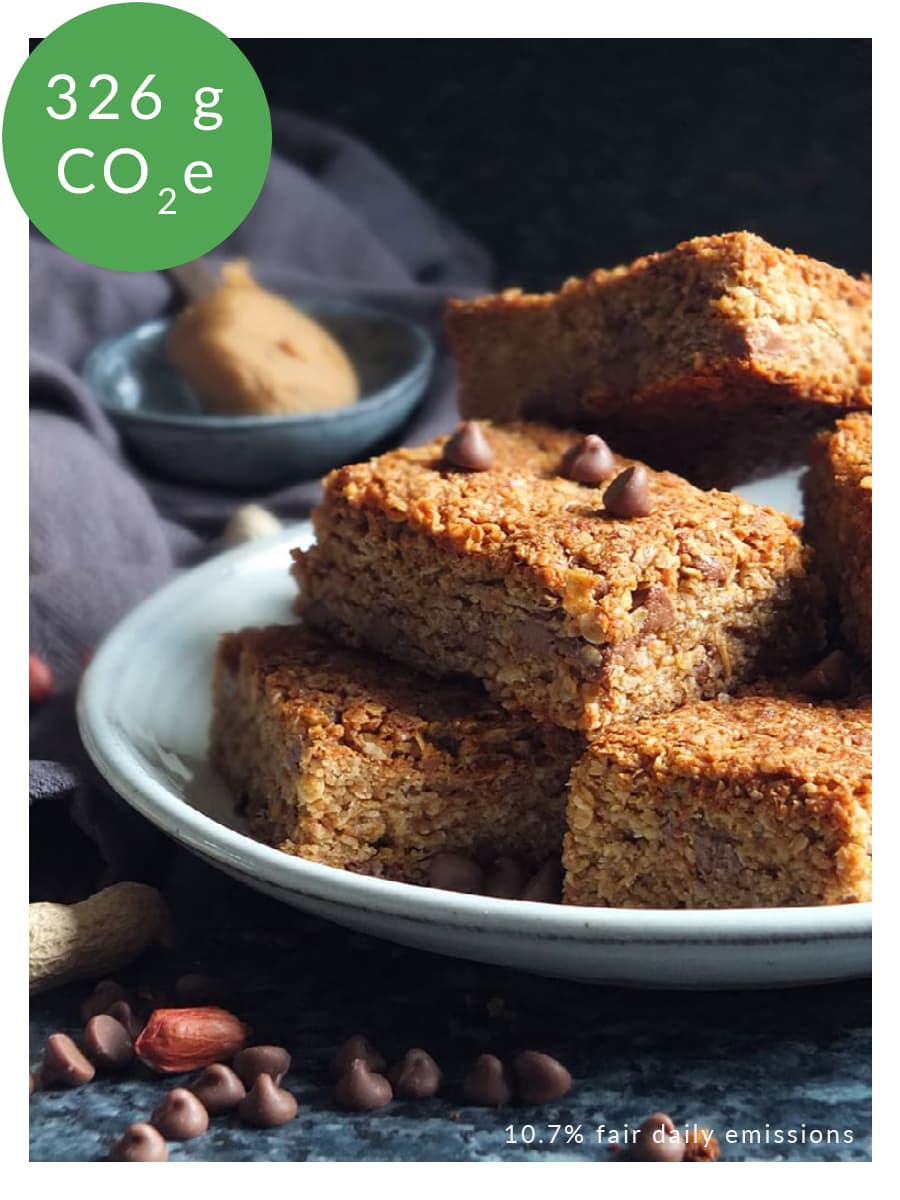
How have you figured out the carbon emissions for each ingredient? Talk us through the background science.
We calculate the average carbon footprint values based on environmental ‘life cycle assessments’. Many studies are available for each food, which we collect and compare to get an average for each food.
In each study, you map the exact processes required to make a given food, taking into account the farming techniques used, processing, packaging, transport, and more. You can then match each process to the expected greenhouse gas emissions, allowing you to estimate the food’s total climate impact.
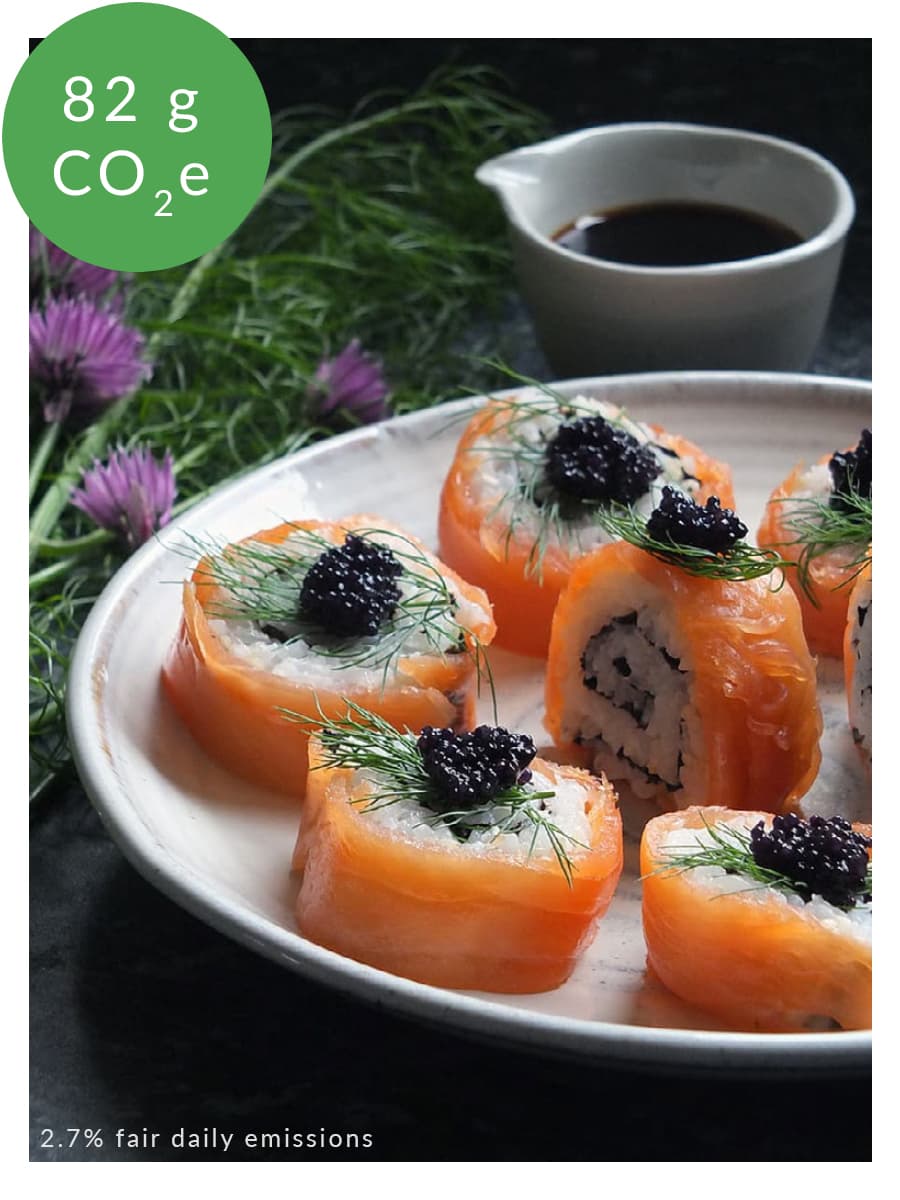
How do you see carbon emission labelling evolving in the future?
I think they will become much more widespread. We think you will start to see carbon emission labels on food products and in cafes and restaurants. There’s a chance it could even become required by law for things like food products to display this information. For that, however, the cost of each assessment would need to be reduced.
There may also be a shift from the labels we display now, which just presents the carbon footprint value, towards a score or rating system, although more research will be needed on that.
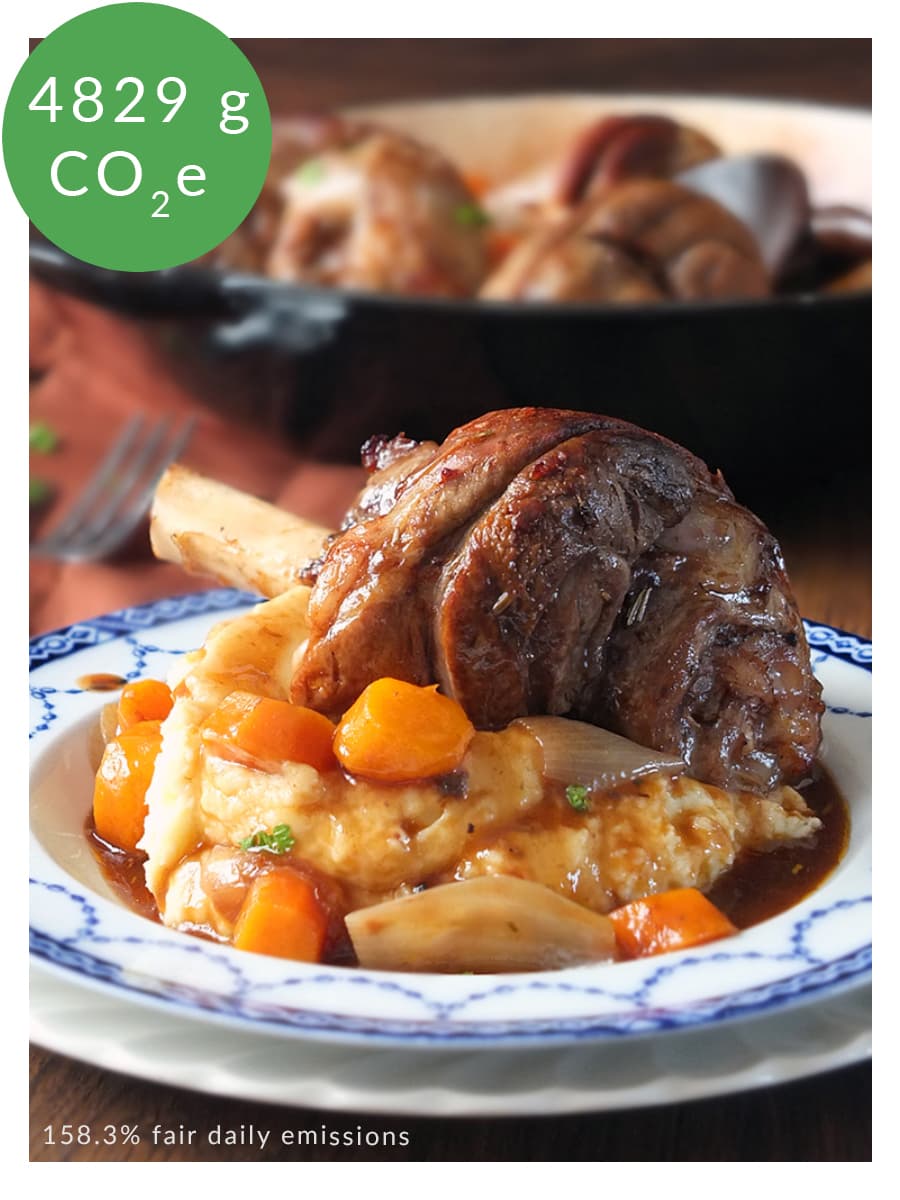
Do you have any tips for reducing the environmental impact of our diet?
The best thing you can do is to reduce your consumption of meat, or any animal-based products. Over their lifestyle, animals emit a very high amount of methane (usually through burping). Methane is over 80 times more potent than carbon dioxide.
The next best thing you can do is reduce and avoid food waste. It’s estimated that 25% of all food is wasted. This correlates to a whopping 6% of total global greenhouse gas emissions!
Finally, eating seasonal food is also usually much better than eating out-of-season food, which has higher emissions from having to artificially create the right environment.
Anything else you’d like to add?
Only that we’re still at the start of our journey. If you have any ideas or ways we can use the values, or want to use them yourself, then we’d love to hear from you!
Get carbon emission labels for your recipes
Designed for food companies, My Emissions offers an all-in-one platform to calculate, reduce and carbon label your food. My Emissions no longer provides carbon emissions labels for food bloggers, as they’ve set their sights higher. Their product is now used by some of the largest food companies in the world.
Contact them directly for a demo.
Spread the word! Pin this post!
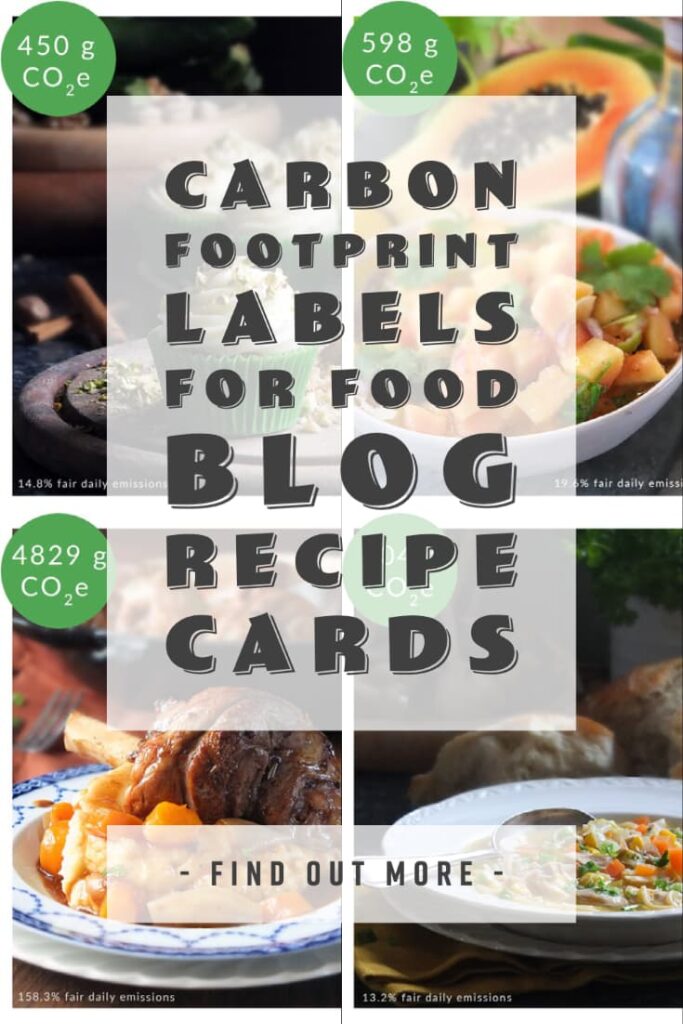
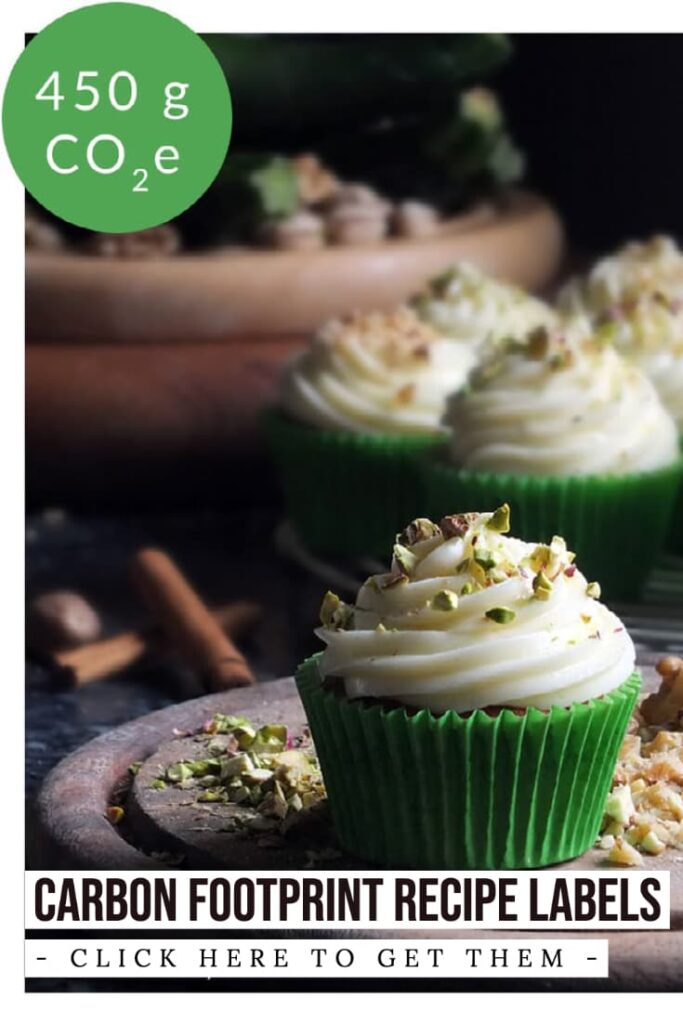

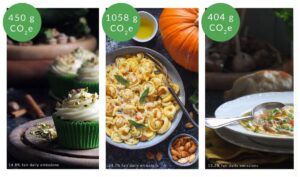
 Easy Egg-free Halloween Cake Recipe
Easy Egg-free Halloween Cake Recipe
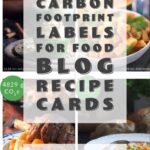


Thanks for sharing, this loloks like a great idea 🙂
Thanks Nic! I’m so excited to be part of this new labelling system – I think it’ll catch on pretty quickly too.
This is a fantastic concept! Thank you for sharing this. What a good way to increase awareness of the carbon footprint of the food we consume. Bookmarking away!
Thanks! It’s an exciting project to be part of, that’s for sure!
This is really awesome! I’d love to check it out!
I hope you do! It’s an awesome thing, I think!
Very interesting information. Thanks . Great pictures too.
Aw thanks! I’ve been experimenting with my photography style lately. I think it’s working!
Interesting idea! New concept to me, as far as putting carbon footprint info on recipes.
It’s new to everyone, really, but I really do think we’ll be seeing more and more of it over the coming years.
This is very interesting. I haven’t seen much of it in the US yet, but I love the idea. It’ll def make us more aware!
Have a look at Oatly and Quorn packaging – you’ll see the labels there. It’s coming, slowly! 🙂